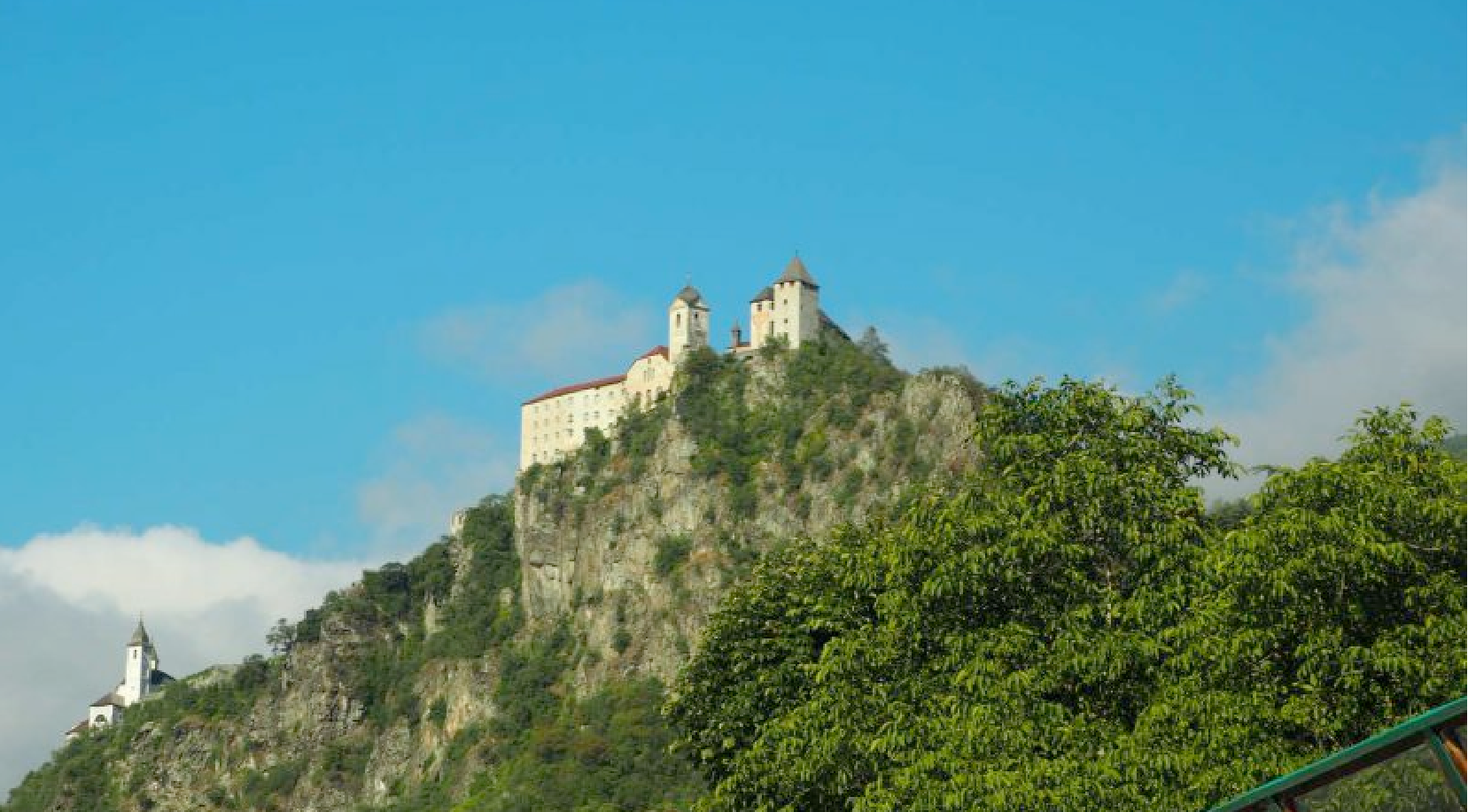(ZENIT News / Säben, 19.05.2024).- The monastery of Säben, situated on the imposing hill of Chiusa, in the province of Bolzano, seemed to have closed a historic chapter when the last three nuns left the Abbey in 2021. After 335 years of continuous presence, their departure left a void in the “holy mountain” of South Tyrol. However, what seemed initially to be an inevitable end has given an unexpected turn.
Bishop Ivo Muser of Bolzano-Bressanone, and Abbess Maria Ancilla Hohenegger, had expressed the hope that Säben could continue being a vibrant monastic center. Although many considered their words as merely symbolic, its destiny has proven them right. On March 14 of this year, the Chapter of the great Cistercian Abbey of Heiligenkreuz, located near Vienna, accepted Bishop Muser’s invitation to send a group of monks to revitalize Säben. Hence, this historic place will be again a refuge of contemplative life and a destiny for pilgrims and spiritual seekers.
The diocese will maintain the monastery’s property, while Austrian Cistercians will contribute the spirit and vitality necessary for its rebirth. This rescue of Säben has highlighted Heiligenkreuz as a beacon of hope and renewal within European Catholicism.
Heiligenkreuz: A Beacon of Hope and Vitality
Heiligenkreuz isn’t a new name in the monastic world. Founded in 1135, it is the world’s oldest Cistercian Abbey, which has never interrupted its activity. Today, it’s also the largest and most prosperous in Europe, with 103 monks, 11 Religious of temporal vows and six novices. The average age of its members is 49, which is notably lower compared with other monastic communities.
According to Abbot Maximilian Heim, the key to its success is rooted in the love of God and neighbour, and in following Saint Benedict’s Rule: “Ora, Lege et Labora” (Pray, Read and Work). This philosophy, combined with the unity within the community and with the Church, has enabled Heiligenkreuz to flourish in modern times.
In addition to its spiritual life, Heiligenkreuz is also a center of academic excellence. The attached Faculty of Theology, named in honour of Benedict XVI, has been Pontifical since 2007, and has outstanding Professors such as Hanna-Barbara Gerl-Falkovitz and Alfred Hierold. At present, it has 342 students from 39 countries, reflecting it global attraction and relevance.
A Legacy of Leadership and Renewal
Heiligenkreuz’s rebirth is due in great part to the vision and leadership of key figures. Father Karl Braunstofer, who was Abbot from 1945 until his death in 1978, played a crucial role during Vatican Council II and the post-conciliar years, guiding the Abbey with a balance between tradition and renewal. His legacy continues influencing the community, which keeps alive the flame of faith and devotion.
The influence of Pope Emeritus Benedict XVI was also significant. In 2007, during his Apostolic Visit to Austria, he visited Heiligenkreuz and praised the place as a bastion of Marian spirit and genuine renewal.
A Brilliant Future for Säben
With the revitalization of Säben, the monks of Heiligenkreuz will take their focus of contemplative life and spiritual commitment to this historic monastery. This rebirth will not only benefit the local community and pilgrims, but also symbolizes a new era of hope and renewal for European monasticism.
Heiligenkreuz’s example shows that, even in times of vocational challenges, it’s possible to revive the flame of monastic life and to offer a refuge of peace and spirituality in the modern world. Säben, with its rich history and now revitalized community, is prepared to be a beacon of faith and contemplation for the coming generations.
Thank you for reading our content. If you would like to receive ZENIT’s daily e-mail news, you can subscribe for free through this link.



